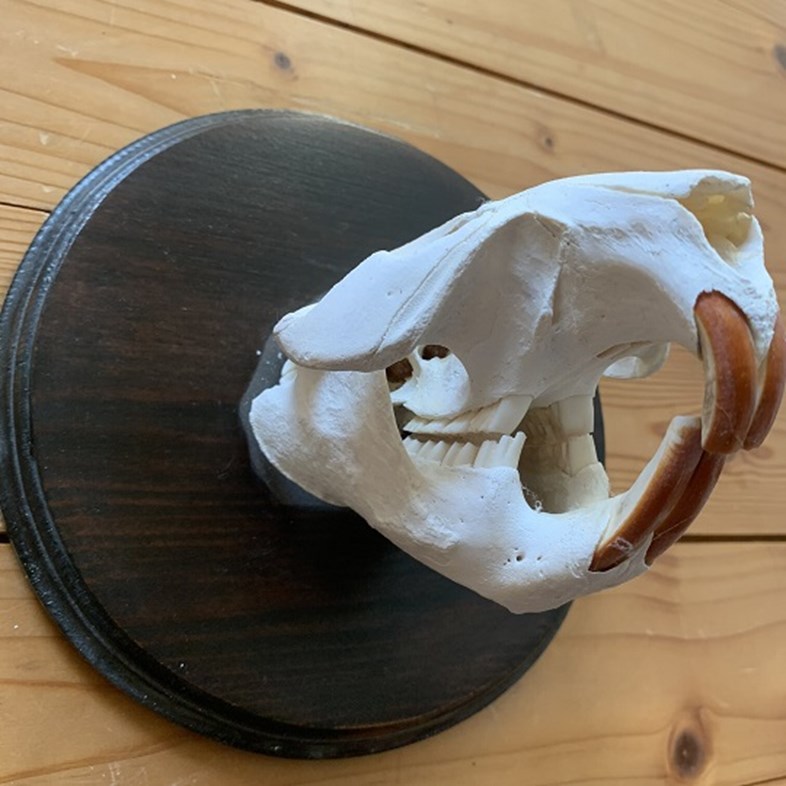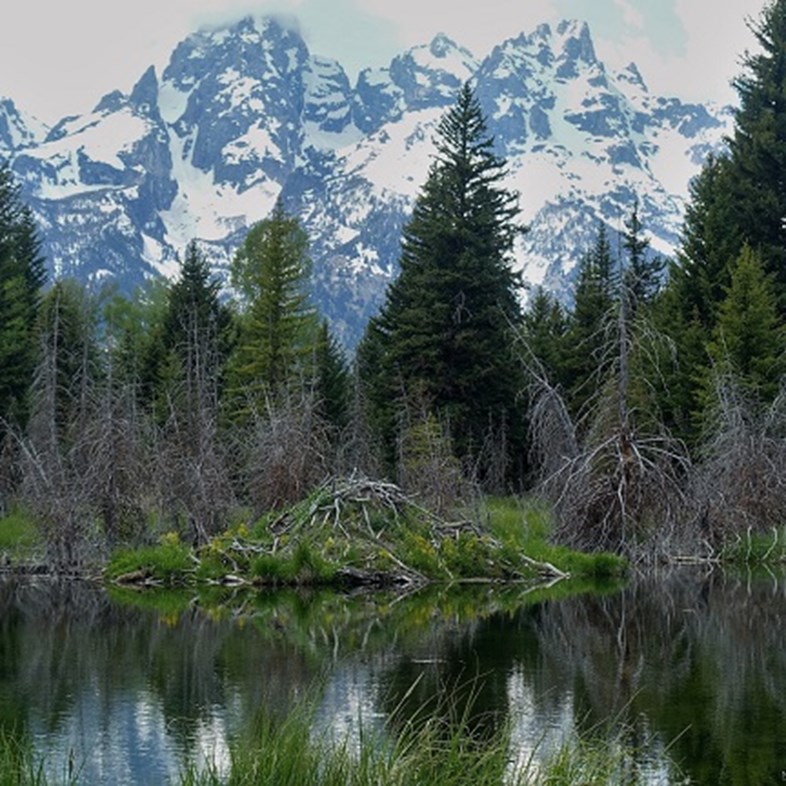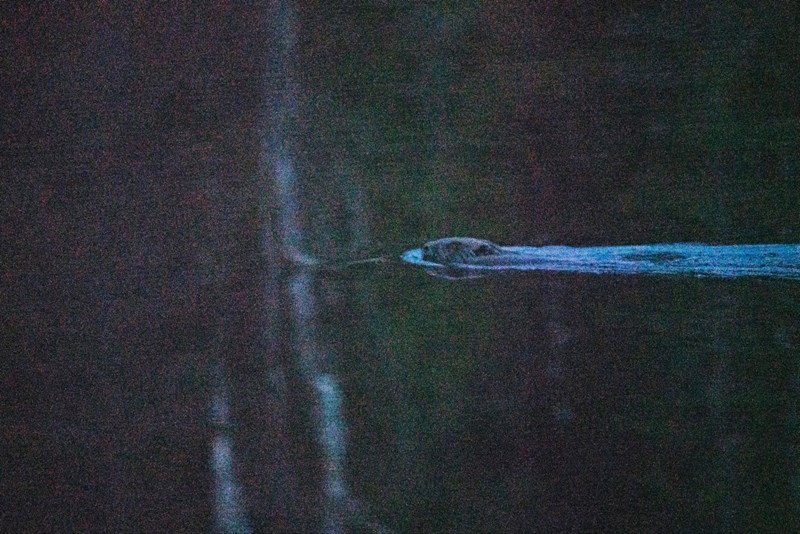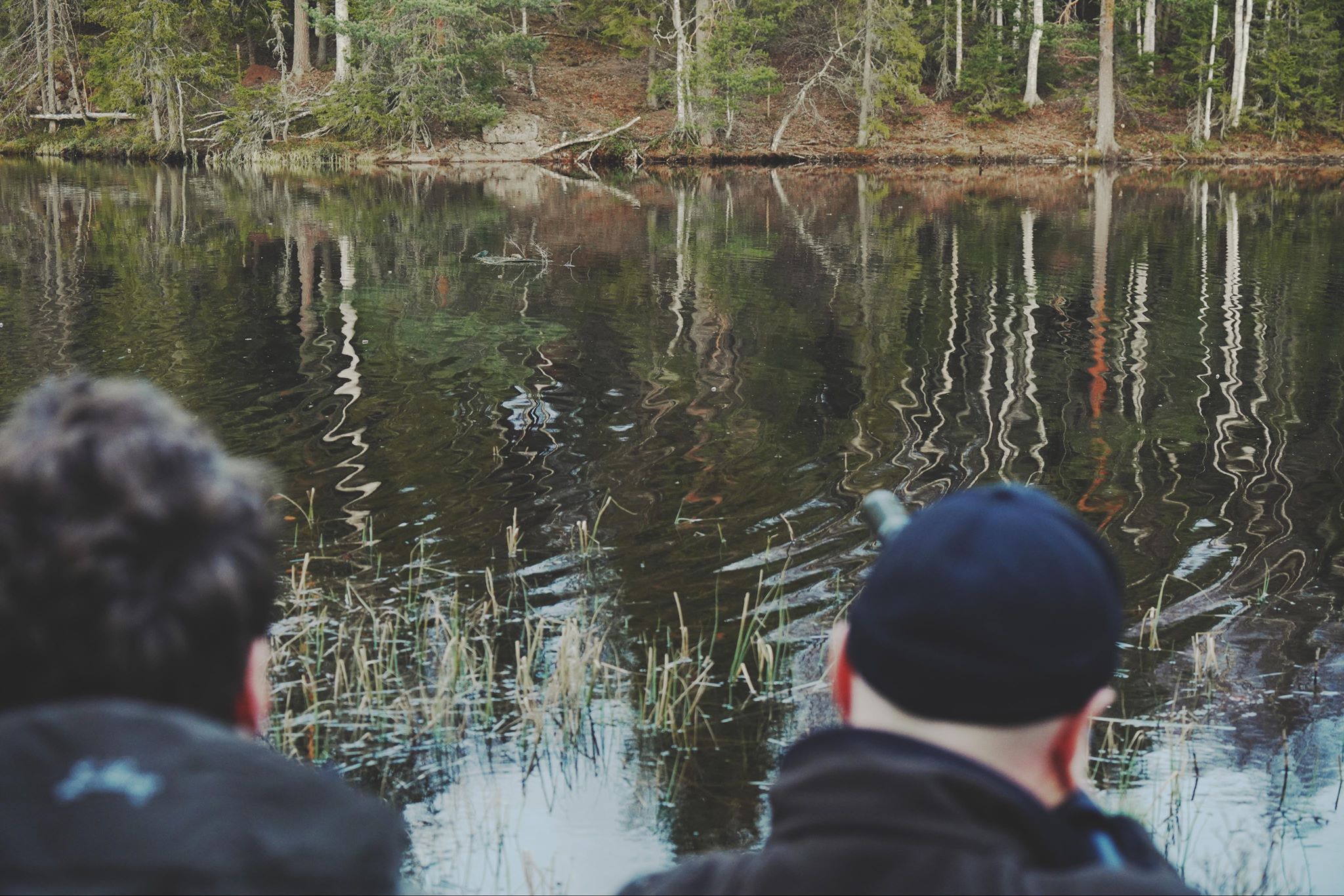
Norma Oryx 30-06 Springfield 165gr
Range
Wound Channel
Penetration
Stopping power
Hunting beavers has become more and more commonplace throughout the world. Historically, trappers and hunters regularly hunted beavers for their pelts and it led to a sharp decline in populations. Following longer periods of restrictions on both fur trade and beaver hunting, the beaver population has returned again to many areas and is on the rise. Consequently, many hunters are now able to enjoy the amazing hunting experiences and challenges that beavers offer. In this article, we will discuss some of the basic information and knowledge that a beaver hunter should be familiar with out in the wild.
Summarizing some general information on the beaver as wild game and useful knowledge that a beaver hunter should have to successfully hunt this very challenging animal.
In this section we will apply what we have learned about the beaver to give you a solid tactical foundation for your own beaver hunting. We will also discuss useful gear and equipment for beaver hunting.
We hope you will find this article helpful and enjoyable to read.
The Beaver (in latin: Castor) exists in two extant species, the North American beaver and the Eurasian beaver. They are quite similar and in fact both species have been introduced as non-native species across different geographical areas. They are the second largest type of rodents in the world and live semi aquatic lives along lakes and rivers. The intimate relation to water means the beaver has evolved features that make it an excellent water creature. The feet are webbed and the nostrils and ears can be closed. The eyes have transparent lids so it can see underwater, even though sight is not a particular strong sense for beavers. Perhaps most important to note for hunters, is the fact that beavers can stay submerged in water for up to 15 minutes and beavers will be quick to submerge into the depths at the slightest sign of intruders.
Both species of beavers will weigh between roughly 10 to 30 kgs, which can be quite a challenging weight to carry around especially when they are wet. Beaver meat is seen as a delicacy in some countries, while it is shunned in other places. As with most wild game, the key to a tasty dish is how the meat is handled and prepared. Two other noteworthy features are the teeth and the paddle. A beavers teeth will grow continuously throughout its lifetime and their famous incessant work-ethic has been attributed to the need to file down the teeth against tree trunks. The teeth make for a very special trophy should you be able to bag a beaver on your hunt. The paddle is also an interesting aspect. It is used as a warning signal when the beaver senses acute danger to itself and surrounding beavers. By striking the water surface with the paddle, all nearby are immediately warned of impending predators. The paddle too makes for a lovely trophy and a token by which to remember your hunt.

Beavers both in Europe and North America had been aggressively hunted for their furs, which are some of the densest furs in the entire animal kingdom, as well as their special glands called the castor sacs. These glands emit a very smelly substance called Castoreum which the beaver uses to scent mark territory. For humans, this substance has been used in the production of perfume up to this day, while traditionally it has also been an ingredient in medicine. As a hunter, what is probably most important to know is that you do not want to damage these glands when handling a downed beaver. The scent from the Castoreum is strong and extremely hard to wash out of any equipment or clothing that it comes in contact with, so extra attention is required when skinning the beaver. The reward for carefully handling this area is an unstained beaver fur which you can retain for decorative purposes or use in tailoring. Because the beaver is semiaquatic, it needs to be able to stay warm even in cold and wet conditions which its fur with up to 10.000 hairs per square centimeter can handle. It also means that there is quite a thick hide and some fat to handle. When skinning a beaver it is a good idea to bring a smaller knife and especially a good knife sharpener.
As a small side-note, beavers are now considered as “Least Concerning” on the endangered species listing, and many areas are now facing problems of overpopulation.
Beavers live in family groups which are called beaver colonies. This unit consists of an adult beaver couple and their offspring which are called kits and yearlings. Beavers are monogamous and work and raise their offspring together and also mark their territory together. This makes it very difficult for the hunter to determine what gender a beaver in his sights might be. A general rule of thumb is that the parents will be doing most of the work, while the yearlings are helping out and exhibit more playful behaviour as they learn the necessary skills to start their own colony. The kits will stay inside the lodge for protection most of the time. The beaver is a so-called keystone species within its ecosystem, meaning that it has a profound effect on its surrounding natural habitat and the species within it. This of course means that hunters must practice prudent wildlife management strategies when hunting beavers, so as not to disrupt the ecosystem. In areas that lack natural predators of beaver it is also important that a hunter dutifully culls the number of beavers, as they can easily overwhelm an area if left unchecked.
It is not very difficult to find out if there is a beaver colony on your grounds, as they create structures that can be quite impressive in size and scope. A beaver colony will create 2 main types of structures, dams and lodges. The lodges are usually built in the vicinity of the dam, in fact many colonies will have to build a dam before they can build a lodge if there is no still body of water around. In that case, the colony will build a temporary shelter while they work on their dam. They do this in autumn when their damwork is usually completed, as the lodge mainly serves to protect the beaver colony from the harsh effects of the winter season. You can easily distinguish between a permanent lodge and a temporary shelter by the size of the structure. Beaver lodges are quite complex in their internal architecture even though they dont look like much more than a heap of sticks from the outside. The entrance and exit will usually be under water and will lead up to the feeding chamber and a nesting chamber that are above water levels. The lodge will have a main vent, which gives the entire structure a tent-like look. This is not the only source of ventilation though, as the beaver will clutter and dam the holes between the sticks of the lodge’s roof with clay and debris that naturally leave small pockets of ventilation. This act of proofing the top structure on the lodge is also the best way to spot an actively inhabited beaver lodge, because you will see clay markings from the outside. If the top of the lodge has no visible markings, it is pretty safe to conclude that this lodge has been abandoned as the rain washes away the clay and debris and no beaver has been there to replace it.
Territory is quite important to beavers, as they invest so much energy and resources into it. While beavers are extremely shy, they can also be aggressive. In order to avoid confrontation, beavers will practice a behavioural strategy called “dear enemy effect”, where scents of close neighbours will be more familiar than a foreign wandering beaver. This behavioural pattern can help the hunter determine which beaver individual he is dealing with and not to cull one particular colony too rapidly. If you spot a group of beavers, you can be pretty sure that they belong to the same colony and that they will be tied to that particular area for the duration of that hunting season.

Now that we have some background information on the behaviour and habitat of the beaver, let’s discuss the basics of how to approach a beaver hunt. As with any successful hunting adventure, it starts at home with a good plan and some good equipment.
First off, since the beaver is so heavily tied to aquatic areas, you will likely need a good pair of water resistant boots. While it is difficult to stalk a beaver, you are very likely to encounter a lot of water during any type of beaver hunting. Beavers can feel vibrations in the ground, sort of like a seismic sensor and your footsteps on solid ground will cause small vibrations that reach the beaver as it swims in the nearby waters.
Water resistance in general is good for all of your equipment and clothing, as you are likely to have to march through some wet terrain or endure the odd rain shower while hunting. Beavers, as discussed, have poor eyesight, so any camouflage pattern is not likely to help you too much. You can get very close to a beaver if it has not sensed your scent or heard you. It could be worthwhile to try clothing with some kind of scent blocking technology, but the best possible strategy is to strategize your hunt with the wind pattern in mind.Depending on the terrain, it could be either advisable or necessary to have some kind of boat or water vessel. Beavers are usually found either in their lodges, at the dam, at a feeding site or travelling between these places. Beavers do not like to travel far on land because that is when they are at their most vulnerable to an attack from predators, so they will sometimes even construct a water canal. This means that you will likely benefit from travelling some distance over water too to find a good spot from which to hunt them. Further, since the beavers first instinct upon encountering a threat is to head for water, it can be an invaluable safety measure to bring some kind of device that lets you travel on water should you need to retrieve a shot beaver in water or conduct a search operation.
Since beavers are mostly nocturnal and extremely attentive animals, you will likely need good optics. Both scope and binoculars should be able to function in the dimmer lights of dawn and dusk to give you the optimal conditions for a safe shot. Depending on the legislation in a given hunting area, it can be illegal to fire before or after certain hours of the day so always consult your local guidelines.

Beavers, like most rodents, are a tough animal. While they may be small in stature, a beaver that is fatally shot can still manage to reach water and submerge. In those scenarios it is often unlikely that you will be able to retrieve it, as it will die under water, sink to the bottom and stay there. Therefore it is important to not to be fooled into choosing a caliber that is too light. In order to achieve the quickest possible end for the beaver, it is advisable to use some kind of rapidly expanding bullet that delivers a good amount of hydrostatic shock. Around the world, regulations differ as to what guns are legal for beaver hunting. In Sweden for example, a 3,2 gram (or 50 grain) bullet with a minimum of 800 Joules of energy at 100 meters is the minimum requirement. It is not a bad idea to go for a bigger and more powerful cartridge. Any of the 6.5mm calibers like 6,5 Swedish Mauser or 6,5 Creedmoor are probably the best balance between fast, efficient knockdown and excess power. Even the venerable big-game caliber 30-06 Springfield or 308 Winchester are excellent choices, especially for bigger beavers. With good shot placement, you do not need to worry about being overpowered or any overly dramatic effects on the animal. Beavers are sturdy and tough creatures.
As for bullets, there are many different choices in the expanding bullets department. If you prefer a ballistic tip, the Norma TIPSTRIKE and ECOSTRIKE are excellent candidates. Since beavers live in aquatic habitats, it may be a legal requirement and a conscious choice to use a lead-free expanding bullet like the ECOSTRIKE. If lead bullets are legal in your area, the TIPSTRIKE offers the most hydrostatic shock for maximum stopping power. If higher weight retention is important, then a BONDSTRIKE or ORYX are excellent choices as well.
As with any hunting spot, the first priority is that you should be able to get off a safe shot from your location. Beavers are notoriously hard at work trying to fell trees, swimming across water and gathering sticks so they are often located quite inaccessibly. Some hunters therefore elect to shoot the beaver while he is in the water, often aimed at the head. This is not advisable, especially for beginning beaver hunters, as the margin of error in terms of shot placement is very slim and even a fatal shot could leave the beaver enough time to reflexively dive away. Since the lodge usually has an underwater entry and exit point, it is often quite difficult to catch them there as well. Therefore, an ideal hunting spot for beaver hunting would overlook as many points of interest to the beaver as possible. The feeding area is usually the best one to look out for, as the beaver will be either on shore or very close to shore during feeding. If you can manage wind and noise properly, it is possible to set up a spot quite close to the feeding ground.
As the beaver is nocturnal, it is a good idea to get out to your spot either way ahead of the evening sun and from a direction where the wind will not blow your scent into the direction from the beavers are thought to be located. This allows you to enter the area with as little risk of detection as possible. If the beaver is already out and about, it is extremely difficult to sneak up on the animal without being heard or sensed through the vibrations in the ground. If one is to stalk the beaver like that, a boat is usually the best bet, although shooting from a boat is way more difficult than from land. Another option is to get up really early and wait for the break of dawn. It depends on the conditions of the hunting ground, how passable the terrain is and how well one knows it and is able to navigate under poor lighting conditions.
Once startled, the beaver is usually not eager to show himself again. Especially if one can observe the warning signal beavers give each other by striking the surface of the water with the paddle. It will make an audible sound like a rock hitting the water and it usually means that the hunt is over. If the beaver retreats without this signal, it is not unlikely going to return if you can just be patient and wait it out.
Beavers make for small, challenging targets. The vital areas consist of the heart and lungs as well as the brain. The brain is the smaller target in this case, and is smaller than the size of a tennis ball, which is a challenging shot for any hunter. Beavers are usually actively moving their heads too which adds to the difficulty of the shot. It is however the quickest way to down the animal, a classic risk/reward situation that requires a lot of skill and practice of the hunter. For the fledgling beaver hunter, it is recommended to aim for a clean hit to the heart and lungs. The challenge here is that you risk losing the animal if it manages to reflexively head for water. In order to combat this, the best strategy is to use a properly powerful caliber and bullet and to wait for the beaver to be firmly on land. This will test the hunters patience, as there is no reliable way to tell if the beaver will move up on to the shore or if it will be possible to get off a proper shot at its broadside once it is on land. As always, you will never have to regret a bad shot you didn’t take.

As populations have grown again, in some places too much, it has once again become possible and necessary to hunt beavers around lakes and rivers around the world. It is an amazingly challenging game to hunt and it will take you to some amazing places and test your skills as a hunter and a marksman.
Text: Robert Goldberg